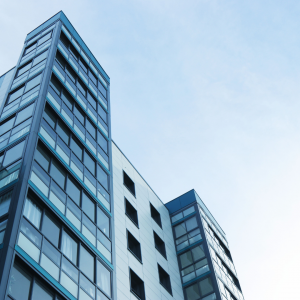Our technical team has observed a heightened focus, as well as an influx of inquiries, on the building regulations and fire safety standards. In response to this demand, and to keep the industry well-informed, we carried out a Q&A with our head of operations, James Purdey, where we answer FAQs on fire safety and provide clarity on the new Fire Safety Act 2021, which commenced in May 2022, and the Fire Safety (England) Regulations 2022 which came into place in January 2023. Let’s start with the basics…
Which types of premises fall under the scope of the Fire Safety (England) Regulations?
The Fire Safety Regulations were implemented under Article 24 of the Regulatory Reform (Fire Safety) Order 2005 and are applicable to buildings of any height that contain two or more domestic premises
This differs from the Fire Safety Order which is applicable to a diverse range of premises, including residential blocks as well as businesses, charities, accommodations hosting paying guests, and even public buildings.

Will the domestic premises be part of the risk assessment?
The answer is unfortunately not a straightforward yes or no. Whilst the Fire Safety Order’s scope doesn’t extend to the inside of dom
estic premises and excludes individual flats from direct risk assessments, the Fire Safety Act 2021 specifies that regulations do indeed apply to external walls and individual flat entrance doors that connect domestic premises to communal areas. In essence, this means the domestic premises themselves are not part of the risk assessment, but the flat entry doors are to be taken into account
What are the new requirements for fire doors?
Now, as per the Fire Safety (England) Regulations 2022, there has been an emphasis on both flat entry and communal fire doors within residential blocks, regardless of the building’s height. The “responsible person” is mandated to provide information to the residents about the importance of fire doors and the need to ensure they are in a suitable and sufficient condition.
On top of that, for buildings exceeding 11 meters, annual inspections for flat entry doors and quarterly inspections for communal doors are required.
Are there any additional requirements for buildings that are 18 meters +?
Certainly! When it comes to high-rise buildings that are over 18 meters, they face even more stringent requirements, including additional duties on top of the ones already stated, which include enhanced wayfinding signage, secure information boxes containing site plans for the Fire Service and additional checks on essential fire safety equipment.
-James Purdey, Head of Operations at 4site Consulting Ltd
If you find yourself with any additional questions or seeking further clarification, do not hesitate to contact us at 4site Consulting, where our team of safety experts is more than happy to help you with your portfolio’s risk management.


